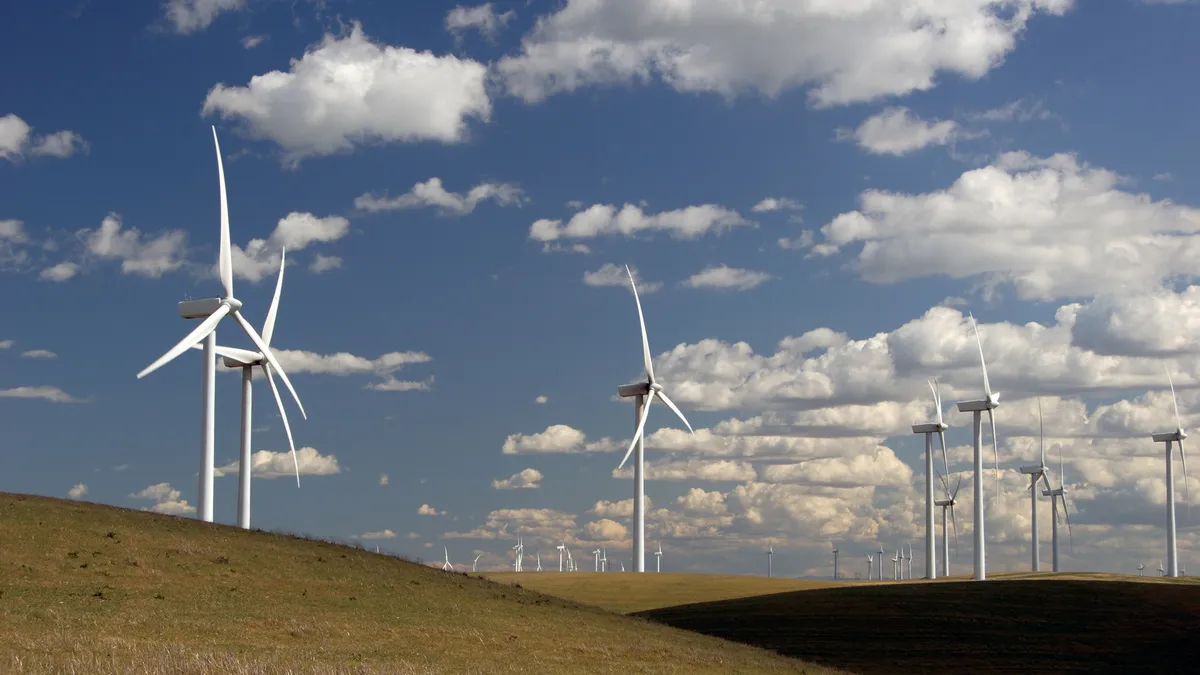Dive Brief:
- The U.S. wind industry grew 8% in 2014 to reach a cumulative installed capacity of 65.9 GW, thanks to the 2013 extension of the $0.023 per kWh production tax credit (PTC) vital to its growth, according to the 2014 Wind Technologies Market Report from the Department of Energy (DOE) and Lawrence Berkeley National Laboratory (LBNL).
- Wind output met 4.9% of an average year’s U.S. electricity demand in 2014. Driven by the PTC’s structure, which rewards performance, the U.S.’s second-in-the-world installed wind capacity made it the world leader in wind energy-generated electricity production.
- Wind energy prices, according to LBNL, are at an all-time low and competitive with wholesale power prices and the cost of fossil and nuclear generation in resource-rich regions. Growth driven by low prices and increased competitiveness added 22,500 wind-related jobs in 2014, bringing the industry’s total to 73,000.
Dive Insight:
The 2014 installed capacity was 4,854 MW, with project investment at $8.3 billion. Wind made up 24% of all new U.S. electricity generating capacity built last year and one-third of all new U.S. electricity generating capacity built between 2007 and 2014. However, 4.9% puts the U.S. at only fifteenth in the world in terms of its percentage of electricity consumption from wind.
The trend toward taller turbines with bigger rotors designed to harvest lower speed winds continued in 2014, according to LBNL. They are being used both at previously undeveloped sites with low winds and at sites where advanced capabilities can harvest moderate winds more profitably.
The Clean Power Plan relies on obtaining its 32% reduction in U.S. greenhouse gas emissions by 2030 through increasing to 28% the share of total U.S. power generation from wind and other renewables. There are 13.6 GW of wind now under construction, but wind’s ability to meet the CPP generation target may hinge on Congress renewing the PTC.













